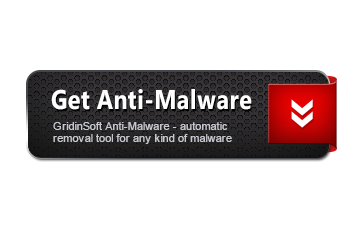The Win32/GenKryptik.EQLA is considered dangerous by lots of security experts. When this infection is active, you may notice unwanted processes in Task Manager list. In this case, it is adviced to scan your computer with GridinSoft Anti-Malware.

Gridinsoft Anti-Malware
Removing PC viruses manually may take hours and may damage your PC in the process. We recommend using GridinSoft Anti-Malware for virus removal. Allows to complete scan and cure your PC during the trial period.
What Win32/GenKryptik.EQLA virus can do?
- Executable code extraction
- Injection (inter-process)
- Injection (Process Hollowing)
- Injection with CreateRemoteThread in a remote process
- Attempts to connect to a dead IP:Port (1 unique times)
- Creates RWX memory
- Possible date expiration check, exits too soon after checking local time
- At least one IP Address, Domain, or File Name was found in a crypto call
- Expresses interest in specific running processes
- Reads data out of its own binary image
- A process created a hidden window
- Drops a binary and executes it
- The binary likely contains encrypted or compressed data.
- Uses Windows utilities for basic functionality
- Executed a process and injected code into it, probably while unpacking
- Attempts to remove evidence of file being downloaded from the Internet
- Tries to unhook or modify Windows functions monitored by Cuckoo
- Creates or sets a registry key to a long series of bytes, possibly to store a binary or malware config
- Installs itself for autorun at Windows startup
- Exhibits behavior characteristic of Nanocore RAT
- Creates a copy of itself
- Attempts to interact with an Alternate Data Stream (ADS)
- Collects information to fingerprint the system
- Anomalous binary characteristics
Related domains:
jamalrnukkam58.sytes.net |
How to determine Win32/GenKryptik.EQLA?
File Info:
crc32: 992C6EE5md5: aca62962ec59c2317cabbb1422245514name: upload_filesha1: a03c91a79057d8acfdbb1debd234ebf77aa97bffsha256: 28d8e7c63a11bda1623e1a9a660972e234199771d4b84d44e1143bee1aa1e86bsha512: 910fde9a0bd95d48b61afd73fde2039f908fa82a49aca09c484e4c52aa5d30d9c8ec3fa4efde8d7450ffb4ae9f9aef01a5d9eb34e5aaff15f0e18d5fe663d78assdeep: 12288:TzrtkYBjJ/JoxxB7FyKGXepX48419bpArIilO7XE7aOoQwuBmYe21A9BSKS:TP2qJ/JonTx5t6KI7X1f8vCrSLtype: PE32 executable (GUI) Intel 80386, for MS WindowsVersion Info:
0: [No Data]
Win32/GenKryptik.EQLA also known as:
| Bkav | W32.AIDetectVM.malware2 |
| Elastic | malicious (high confidence) |
| MicroWorld-eScan | Trojan.GenericKD.34363882 |
| McAfee | Artemis!ACA62962EC59 |
| Cylance | Unsafe |
| VIPRE | Trojan.Win32.Generic!BT |
| AegisLab | Trojan.Multi.Generic.4!c |
| BitDefender | Trojan.GenericKD.34363882 |
| K7GW | Riskware ( 0040eff71 ) |
| CrowdStrike | win/malicious_confidence_100% (W) |
| Invincea | heuristic |
| F-Prot | W32/Delf.AHD |
| Symantec | Infostealer.Lokibot!43 |
| ESET-NOD32 | a variant of Win32/GenKryptik.EQLA |
| APEX | Malicious |
| Paloalto | generic.ml |
| Kaspersky | HEUR:Trojan.Win32.Kryptik.gen |
| Alibaba | Trojan:Win32/DelfInject.ali2000015 |
| Rising | Trojan.NanoCore!8.527 (CLOUD) |
| Ad-Aware | Trojan.GenericKD.34363882 |
| Comodo | .UnclassifiedMalware@0 |
| F-Secure | Trojan.TR/Kryptik.yeexs |
| TrendMicro | TROJ_FRS.0NA104HF20 |
| MaxSecure | Trojan.Malware.300983.susgen |
| FireEye | Generic.mg.aca62962ec59c231 |
| Sophos | Mal/Generic-S |
| Ikarus | Trojan.Inject |
| Cyren | W32/Delf.IWTO-6731 |
| Avira | TR/Kryptik.yeexs |
| MAX | malware (ai score=82) |
| Microsoft | Trojan:Win32/NanoCore.VD!MTB |
| Arcabit | Trojan.Generic.D20C59EA |
| GData | Trojan.GenericKD.34363882 |
| Cynet | Malicious (score: 100) |
| AhnLab-V3 | Suspicious/Win.Delphiless.X2091 |
| Acronis | suspicious |
| ALYac | Trojan.GenericKD.34363882 |
| Panda | Trj/CI.A |
| TrendMicro-HouseCall | TROJ_FRS.0NA104HF20 |
| Tencent | Win32.Trojan.Kryptik.Lpva |
| SentinelOne | DFI – Suspicious PE |
| Fortinet | W32/Injector.EMZL!tr |
| BitDefenderTheta | Gen:NN.ZelphiF.34152.XGW@a0p!Gibi |
| AVG | Win32:Malware-gen |
| Cybereason | malicious.79057d |
| Avast | Win32:Malware-gen |
| Qihoo-360 | HEUR/QVM05.1.47CD.Malware.Gen |
How to remove Win32/GenKryptik.EQLA?
- Download and install GridinSoft Anti-Malware.
- Open GridinSoft Anti-Malware and perform a “Standard scan“.
- “Move to quarantine” all items.
- Open “Tools” tab – Press “Reset Browser Settings“.
- Select proper browser and options – Click “Reset”.
- Restart your computer.



Leave a Comment